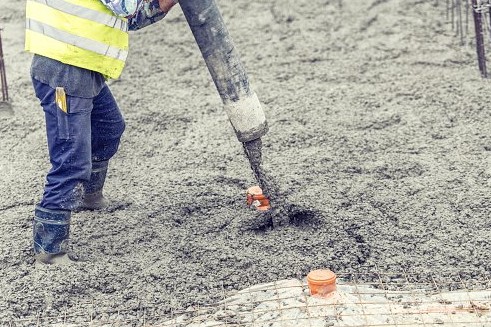
Over a period of over half a century, concrete pumps have gradually taken over from other procedures of moving liquid concrete. A variety of different designs of concrete pump had been developed in the first half of the 20th century but it was Friedrich Wilhelm Schwing’s firm Schwing GmbH that devised the twin cylinder hydraulic concrete pump in 1957. The principle of the design was adopted by nearly all other manufacturers and remains the worldwide standard design.
The pump works by one piston drawing liquid concrete into a cylinder from a hopper while another one simultaneously pushes out its concrete to the discharge pipes. A valve that determines which cylinder is open to the concrete hopper and which is open to the discharge pipes switches over every time the pistons get to the end point (see stone valve below and cartoon left – click to expand ) and the method continues with the first cylinder now discharging and the next drawing new concrete from the hopper. The introduction of concrete pumps gave birth to commercial concrete contractors across the world.
Previously cranes were employed to lift huge buckets (or skips) filled with concrete around where it was required. A crane could lift 1 bucket at a time, normally holding approximately 2 cubic metres of concrete.
There are lots of benefits in pumping concrete within this bucket and crane system. In addition to having the ability to pump concrete much quicker than buckets could lift it, it also means a continuous supply of concrete into the surface and the putting hoses can be placed wherever they have to be the liquid concrete can pour directly from the hose where it is needed instead of having to distribute a two cubic yard mound of concrete over the desired area.
